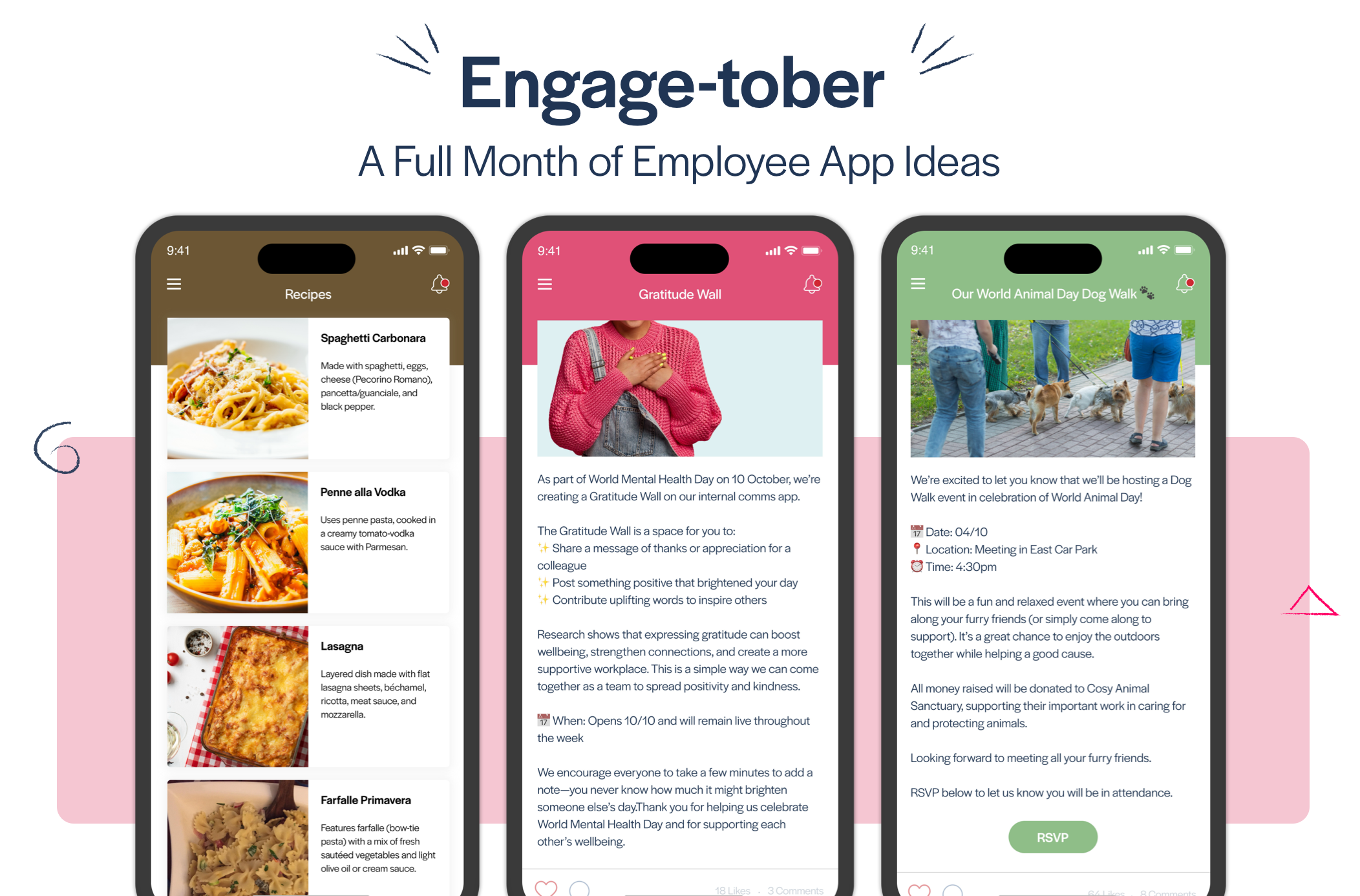
Blog
Building Your Business Case for an Employee Communications App
Our tried-and-true suggestions for making your case for investing in an employee communications and engagement platform.

If you’ve seen that your traditional methods of internal employee communication — email, newsletters, printed magazines, your intranet — are no longer up to the task at your organisation, you may be considering investing in a communications and engagement platform.
Employee communications platforms and apps are becoming more and more attractive to organisations given the somewhat dismal state of internal communications across industries and around the world: Only 29% of internal communications employees believe internal communication has a clear articulated purpose, and nearly half believe they don’t have the right internal technologies for the job.
In your role as an Internal Communications (IC) team member (or someone with communications responsibilities), you may see the value in shifting away from email or print communication, but persuading stakeholders and getting their buy-in is another story.
Here are our tried-and-true suggestions for making your case for investing in an employee communications platform
#1: Identify the problem or opportunity
Put another way, what process do you need to improve, and what documented proof can you share with stakeholders that it isn’t working?
Maybe you’re struggling with an ineffective process of disseminating key information to a dispersed workforce. If you’ve found this problematic, you’re not alone. Forty-two percent of internal communications employees say that hard-to-reach employees is a barrier to a successful IC.
#2: Articulate the desired outcome
What positive outcomes would result from using an employee comms app for all your internal communications? Perhaps it’s a more informed, engaged, productive (even happy) workforce. When organisations have connected employees, productivity can increase by 25 percent.
#3: Outline the benefits of using an employee communications app
The benefits are several, no matter your industry or organisation. Here are a few examples that will likely resonate with your stakeholders:
- Measurable results — Only 12 percent of companies that have a long-term internal communications strategy measure its effectiveness. That’s in large part because so many forms of internal communication aren’t trackable — printed magazines for instance. An employee communication app’s baked-in tracking functionalities removes those barriers.
- Content that can be personalised and targeted — So often, employees don’t bother to read all the company updates that stack up in their inboxes because they’re not pertinent to their role. App content can be highly personalised and role-specific.
- Circular feedback opportunities — When employees can post likes or comments on content, it helps IC teams and management keep their fingers on the pulse of employee sentiment.
- Push notifications — When communication is urgent or required for employee safety or to ensure security, push notifications ensure the right employees get the information they need, with 80% read rates (as opposed to 20% for email).
#4: Identify potential risks and do your homework
Any investment and any strategy comes with risks. Will adoption rates measure up? Will the technology evolve to provide new features? What about data and network security and privacy?
Do your due diligence when investigating potential employee communication platform providers to make sure your questions get answered, and be sure to share details of your research with decision makers, who will want resolutions to any “What ifs.”
#5: Demonstrate how the benefits outweigh the risks — and highlight the risks of not having an app
Once you’ve identified a secure, innovative, benefit-rich provider of employee communications apps, make it clear to stakeholders exactly how the benefits of investing in this technology outweigh any acceptable risks and affect business outcomes (revenue and productivity).
For example, employee apps are known to increase employee engagement, which promotes both retention and productivity. The cost of disengaged employees, on the other hand, is high: In the U.S., productivity loss alone costs businesses $550 billion each year.
Another way this technology can improve your business’ bottom line: Because organisations with employee recognition programmes report 22% higher profit margins, enabling peer-to-peer recognition via an employee communications app can help you realise this lift.
A few other key stats about engaged employees. The top 25 percent of engaged teams have:
- Lower turnover by as much as 65 percent
- One third lower absenteeism rates
- Twenty-one percent higher productivity
In other words, it pays to have an in-the-know, engaged workforce.
Next Steps…
Talk to us at Thrive to learn more about how an informed, connected workforce can be good for your business.
You may also be interested in reading our recent eGuide - Your Journey to a Successful Employee Communications App...










